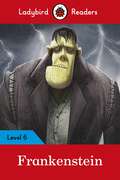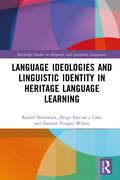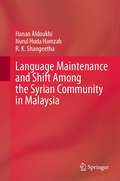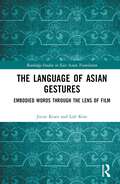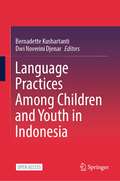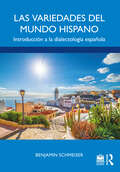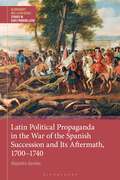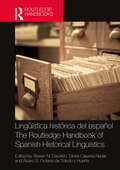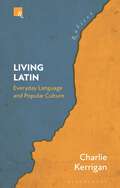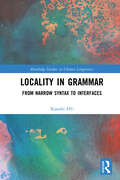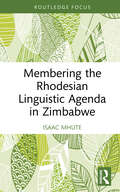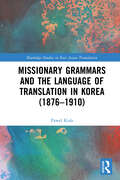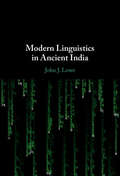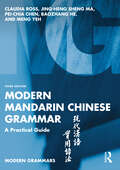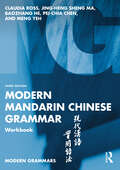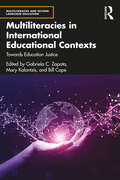- Table View
- List View
Ladybird Readers Level 6 - Frankenstein (Ladybird Readers)
by LadybirdLadybird Readers is an ELT graded reader series for children aged 3-11 learning English as a foreign or second language. The series includes traditional tales, popular characters, modern stories, and non-fiction. - Beautifully illustrated books, carefully written by language learning experts. - Structured language progression to develop children's reading, writing, speaking, listening and critical thinking skills. - Eight levels follow the Common European Framework of Reference for language learning (CEFR). - Language activities provide preparation for the Cambridge English Pre-A1 to A2 (YLE) tests. - A unique code in each printed book provides access to online audio, extra activities and learning resources. Frankenstein, a Level 6 Reader, is A2+ in the CEFR framework and supports YLE Flyers and KET exams. The longer text is made up of sentences with up to four clauses, more complex past and future tense structures, passives and time clauses.Victor Frankenstein was a brilliant scientist. He wanted to create something beautiful, but he created something terrible - a monster! Celebrate 200 years since Mary Shelley's classic was first published!Visit the Ladybird Education website for more information.
Language Ideologies and Linguistic Identity in Heritage Language Learning (Routledge Studies in Hispanic and Lusophone Linguistics)
by Rachel Showstack Diego Pascual y Cabo Damián Vergara WilsonLanguage Ideologies and Linguistic Identity in Heritage Language Learning addresses the ways in which discourses about language value and identities of linguistic expertise are constructed and negotiated in the Spanish heritage language (HL) classroom, and how the classroom discourse shapes, and is shaped by, the world outside of the classroom.The volume examines the sociopolitical contexts, personal histories, and communicative practices of Spanish teachers and students in two diverse geographic regions: the US states of Texas and Kansas. Adopting an integrated sociocultural approach, it considers the ways in which individuals draw from multiple linguistic resources and social practices in daily interaction and how they articulate their beliefs about language through storytelling. Rich interactional data, examples from social media, and stories of community engagement are utilized to demonstrate how Spanish heritage speakers use language creatively and proactively to legitimize and claim power in their home and community linguistic practices.This is an invaluable resource for applied linguists who seek to better understand the relationship between language, ideology, and identity and for graduate students and researchers in the fields of linguistics, Spanish, and HL education.
Language Ideologies and Linguistic Identity in Heritage Language Learning (Routledge Studies in Hispanic and Lusophone Linguistics)
by Rachel Showstack Diego Pascual y Cabo Damián Vergara WilsonLanguage Ideologies and Linguistic Identity in Heritage Language Learning addresses the ways in which discourses about language value and identities of linguistic expertise are constructed and negotiated in the Spanish heritage language (HL) classroom, and how the classroom discourse shapes, and is shaped by, the world outside of the classroom.The volume examines the sociopolitical contexts, personal histories, and communicative practices of Spanish teachers and students in two diverse geographic regions: the US states of Texas and Kansas. Adopting an integrated sociocultural approach, it considers the ways in which individuals draw from multiple linguistic resources and social practices in daily interaction and how they articulate their beliefs about language through storytelling. Rich interactional data, examples from social media, and stories of community engagement are utilized to demonstrate how Spanish heritage speakers use language creatively and proactively to legitimize and claim power in their home and community linguistic practices.This is an invaluable resource for applied linguists who seek to better understand the relationship between language, ideology, and identity and for graduate students and researchers in the fields of linguistics, Spanish, and HL education.
Language Maintenance and Shift Among the Syrian Community in Malaysia
by Hanan Aldoukhi Nurul Huda Hamzah R. K. ShangeethaThis book investigates language choices in different domains among Syrian Arab Muslim families who came to Malaysia after war broke out in their country. It focuses on how Syrian Heritage Language (HL), Modern Standard Arabic (MSA), Classical Arabic (CA), and other languages that might be spoken by these families were maintained and/or shifted from the time these families came to Malaysia until the lockdown due to the COVID-19 pandemic. Most works on Syrian community in Malaysia are focused on social and humanitarian issues; none has explored how Syrians in Malaysia are managing their language use in connection with day-to-day communication and integration. As the Syrian community in Malaysia adapts by learning the host language, their mother language/s might experience a shift. The way the minority communities view their mother language by prioritizing or deprioritizing its use in the family milieu are factors that contribute to language maintenance and language shift (LMLS). As such, this book provides insights on how Syrian parents are managing their own and their children’s language/s, along with the language of the host country.
The Language of Asian Gestures: Embodied Words Through the Lens of Film (Routledge Studies in East Asian Translation)
by Jieun Kiaer Loli KimThe Language of Asian Gestures explores Asian gestures as a non-verbal language within the context of films and dramas.This book provides a cross-cultural Asian perspective on a range of important common gestures and their meanings, covering a range of Asian regions including Korea, China, Hong Kong, Japan, Taiwan, Vietnam, Singapore, Thailand, Indonesia, the Philippines, India, and Pakistan. While most studies focus on text-based communication, gestures find themselves overshadowed by text and speech. Asian gestures, too, often reside in the shadow of Eurocentric viewpoints. This book will shift this dynamic and amplify the voices that have typically been marginalised within 20th-century Eurocentric discussions.The book will be informative for students and researchers interested in Asian languages, cultures, film studies, and pragmatics. It bridges the gap between words and gestures, unveiling a world of concealed meanings and enriching our understanding of diverse forms of expression.
The Language of Asian Gestures: Embodied Words Through the Lens of Film (Routledge Studies in East Asian Translation)
by Jieun Kiaer Loli KimThe Language of Asian Gestures explores Asian gestures as a non-verbal language within the context of films and dramas.This book provides a cross-cultural Asian perspective on a range of important common gestures and their meanings, covering a range of Asian regions including Korea, China, Hong Kong, Japan, Taiwan, Vietnam, Singapore, Thailand, Indonesia, the Philippines, India, and Pakistan. While most studies focus on text-based communication, gestures find themselves overshadowed by text and speech. Asian gestures, too, often reside in the shadow of Eurocentric viewpoints. This book will shift this dynamic and amplify the voices that have typically been marginalised within 20th-century Eurocentric discussions.The book will be informative for students and researchers interested in Asian languages, cultures, film studies, and pragmatics. It bridges the gap between words and gestures, unveiling a world of concealed meanings and enriching our understanding of diverse forms of expression.
Language Practices Among Children and Youth in Indonesia
by Bernadette Kushartanti Dwi Noverini DjenarThis open access book presents studies of language use in Indonesia, focusing on children and youth. It reports on developments in the use of language for narrative production and within the realm of popular culture and traditional cultural practices in Indonesia. Through studies that include cohesion in narrative production, language in radio advertising, naming practices and formulaic prohibitions in Javanese, and speech presentation in popular fiction, the book provides insights into how sociocultural changes are reflected in language. This book is a useful resource for students and scholars conducting research on language and cultural practices in Indonesia, particularly in relation to children and young people.
Las variedades del mundo hispano: Introducción a la dialectología española
by Benjamin SchmeiserLas variedades del mundo hispano tiene un acercamiento nuevo a la dialectología española, ya que guía a los estudiantes por las macrovariedades fascinantes y diversas del mundo hispano. Un libro de texto único escrito en español que ofrece una introducción atractiva y accesible a la dialectología española, sus ámbitos claves incluyen: la cobertura de España, Sudamérica, Centroamérica, y Norteamérica; el libro de texto contiene una mezcla ideal de teoría y práctica; secciones de Práctica que contienen ejercicios para reforzar el aprendizaje; e incluye actividades que invitan a los estudiantes a explorar materiales de video y audio en el sitio web que acompaña el libro de texto. Además, el libro de texto incluye un componente de redes sociales que deja que los estudiantes aprendan en un formato que ha sido poco utilizado en cursos universitarios. Aunque principalmente fue diseñado para estudiantes de dialectología y fonética, tanto a nivel subgraduado como graduado, también sería una fuente invaluable para otros cursos de la lingüística hispánica al nivel universitario. Las variedades del mundo hispano takes a refreshing approach to Spanish dialectology, guiding students through the fascinating and diverse macro varieties of the Spanish-speaking world. A unique textbook written in Spanish and offering an engaging and accessible introduction to Spanish dialectology, its key features include: coverage of Spain, South, Central and North America; the ideal balance between theory and practice; a companion website with extensive audio and video materials for students to interact with; Práctica sections with exercises to reinforce learning; and a social media element that offers insight into a format often under-utilized in university courses. Though designed primarily for students of Spanish dialectology and phonetics at both undergraduate and graduate levels, Las variedades del mundo hispano would also prove an invaluable resource for a wide range of Spanish linguistics courses.
Las variedades del mundo hispano: Introducción a la dialectología española
by Benjamin SchmeiserLas variedades del mundo hispano tiene un acercamiento nuevo a la dialectología española, ya que guía a los estudiantes por las macrovariedades fascinantes y diversas del mundo hispano. Un libro de texto único escrito en español que ofrece una introducción atractiva y accesible a la dialectología española, sus ámbitos claves incluyen: la cobertura de España, Sudamérica, Centroamérica, y Norteamérica; el libro de texto contiene una mezcla ideal de teoría y práctica; secciones de Práctica que contienen ejercicios para reforzar el aprendizaje; e incluye actividades que invitan a los estudiantes a explorar materiales de video y audio en el sitio web que acompaña el libro de texto. Además, el libro de texto incluye un componente de redes sociales que deja que los estudiantes aprendan en un formato que ha sido poco utilizado en cursos universitarios. Aunque principalmente fue diseñado para estudiantes de dialectología y fonética, tanto a nivel subgraduado como graduado, también sería una fuente invaluable para otros cursos de la lingüística hispánica al nivel universitario. Las variedades del mundo hispano takes a refreshing approach to Spanish dialectology, guiding students through the fascinating and diverse macro varieties of the Spanish-speaking world. A unique textbook written in Spanish and offering an engaging and accessible introduction to Spanish dialectology, its key features include: coverage of Spain, South, Central and North America; the ideal balance between theory and practice; a companion website with extensive audio and video materials for students to interact with; Práctica sections with exercises to reinforce learning; and a social media element that offers insight into a format often under-utilized in university courses. Though designed primarily for students of Spanish dialectology and phonetics at both undergraduate and graduate levels, Las variedades del mundo hispano would also prove an invaluable resource for a wide range of Spanish linguistics courses.
Latin Political Propaganda in the War of the Spanish Succession and Its Aftermath, 1700-1740 (Bloomsbury Neo-Latin Series: Studies in Early Modern Latin)
by Dr Alejandro CoroleuLatin Political Propaganda offers the first comprehensive study of the central role played by the Latin language to celebrate or undermine political power during the War of the Spanish Succession (1701-1715). Waged as much on the printed page as on the battlefield, this worldwide conflict gave rise to an astonishing variety of Latin writing across the Continent - in verse or in prose - on both the pro-Habsburg and pro-Bourbon sides. Ranging from official documents, epic, satirical and panegyric poetry to defamatory pamphlets, letters, historiographical and juridical tracts, medals and ephemeral architecture, this vast textual corpus has gone almost unnoticed. Alejandro Coroleu provides close examination of the literary devices of these texts and shows how imitation of models and figures from classical antiquity was at the heart of the authors' highly refined verse and prose technique. He also pays attention to the historical and social context in which the texts emerged, and connects the Latin political writing produced at the time with more popular forms of propagandistic discourse (literary or visual) which found its expression in the vernacular. This book also reveals how the learned language continued to function - even after the hostilities had come to an end in July 1715 - as an instrument of political discourse and propaganda on both sides of the dynastic feud up until the death of Emperor Charles VI in October 1740.
Lingüística histórica del español / The Routledge Handbook of Spanish Historical Linguistics (Routledge Spanish Language Handbooks)
by Steven N. Dworkin Gloria Clavería Nadal Álvaro S. Octavio De Toledo Y HuertaLingüística histórica del español/The Routledge Handbook of Spanish Historical Linguistics ofrece una síntesis actualizada de los diversos campos que componen la lingüística histórica del español. Este volumen, pionero en su género, estudia la historia interna y externa de la lengua española con atención a los desarrollos teóricos y conocimientos contemporáneos sobre la naturaleza del cambio lingüístico y sobre el papel de los factores no lingüísticos en tales procesos. El volumen, escrito íntegramente en español, reúne contribuciones de un nutrido grupo de expertos internacionales. Con capítulos tanto de destacados filólogos como de lingüistas de orientación más teórica, el volumen ofrece a los lectores una panorámica equilibrada y completa del objeto de estudio desde muy diversas perspectivas de investigación. Esta obra aspira a servir de referencia en el campo de la lingüística histórica española y resultará de interés para estudiosos y profesores interesados en dicho ámbito, así como para los estudiantes de lingüística hispánica. Lingüística histórica del español / The Routledge Handbook of Spanish Historical Linguistics provides a state-of-the-art synthesis of the various fields that comprise Spanish historical linguistics. The first of its kind, the volume studies the internal and external history of the Spanish language within the framework of contemporary developments and insights into the nature of language change and into the role of non-linguistic factors in these processes. Written in Spanish, the volume brings together an international group of expert contributors. With chapters from both eminent philologists as well as more theoretically- oriented linguists, the volume provides readers with a well-balanced and comprehensive overview of the field from many different research perspectives. The volume will be an essential reference on Spanish historical linguistics and will be of interest to scholars and teachers in the field of Spanish historical linguistics, as well as students in Spanish linguistics.
Lingüística histórica del español / The Routledge Handbook of Spanish Historical Linguistics (Routledge Spanish Language Handbooks)
by Steven N. Dworkin Gloria Clavería Nadal Álvaro S. Octavio de Toledo y HuertaLingüística histórica del español/The Routledge Handbook of Spanish Historical Linguistics ofrece una síntesis actualizada de los diversos campos que componen la lingüística histórica del español. Este volumen, pionero en su género, estudia la historia interna y externa de la lengua española con atención a los desarrollos teóricos y conocimientos contemporáneos sobre la naturaleza del cambio lingüístico y sobre el papel de los factores no lingüísticos en tales procesos. El volumen, escrito íntegramente en español, reúne contribuciones de un nutrido grupo de expertos internacionales. Con capítulos tanto de destacados filólogos como de lingüistas de orientación más teórica, el volumen ofrece a los lectores una panorámica equilibrada y completa del objeto de estudio desde muy diversas perspectivas de investigación. Esta obra aspira a servir de referencia en el campo de la lingüística histórica española y resultará de interés para estudiosos y profesores interesados en dicho ámbito, así como para los estudiantes de lingüística hispánica. Lingüística histórica del español / The Routledge Handbook of Spanish Historical Linguistics provides a state-of-the-art synthesis of the various fields that comprise Spanish historical linguistics. The first of its kind, the volume studies the internal and external history of the Spanish language within the framework of contemporary developments and insights into the nature of language change and into the role of non-linguistic factors in these processes. Written in Spanish, the volume brings together an international group of expert contributors. With chapters from both eminent philologists as well as more theoretically- oriented linguists, the volume provides readers with a well-balanced and comprehensive overview of the field from many different research perspectives. The volume will be an essential reference on Spanish historical linguistics and will be of interest to scholars and teachers in the field of Spanish historical linguistics, as well as students in Spanish linguistics.
Living Latin: Everyday Language and Popular Culture (Rubicon)
by Dr Charlie KerriganWhat kind of language is Latin, and who is it for? Contrary to most accounts, this book tells the story of Latin as a language of ordinary people. Surveying the whole span of the language's history, it explores the evidence that exists for ordinary Latin around the Roman world, arguing that this material is just as worthy of readers' attention as the famous classics. Those classics are reassessed in the light of popular concerns, as works of art that evoke ancient, sustainable, and communal ways of living, encompassing broad and diverse traditions of readers through time. And of course Latin lived on: this account revisits what happened to the language after the Roman empire, tracing its twin streams - intellectual lingua franca and a series of Romance languages - into the twenty-first century. What emerges is a human chain stretching back thousands of years and still in existence today, a story of workers and weavers, violets and roses, storytellers and musicians, a common and democratic archive of world history. Kerrigan's strong and attractive case for a new conception of Latin sends out a call to arms to reevaluate the place of Latin in history. On the one hand, an interesting and readable history of the language, on the other, this book sets out to provoke questions for readers, students, and teachers of Latin, as well as anyone interested in the ancient Mediterranean world. Latin was and should always be for all.
Locality in Grammar: From Narrow Syntax to Interfaces (Routledge Studies in Chinese Linguistics)
by Xiaoshi HuLocality in Grammar: From Narrow Syntax to Interfaces investigates the operation of locality conditions in syntax and semantics from a cross-linguistic perspective.It is claimed that there are two different types of locality conditions. One is the Generalized Minimality Condition (GMC), and the other is the Phase Impenetrability Condition (PIC). This book demonstrates that these locality conditions play different roles in different computational components of human language, and, therefore, cannot be unified as one constraint as proposed in the literature.The main idea of the book is that the two different locality conditions are sensitive to the difference between syntactic derivation and semantic interpretation and that of overt and covert syntactic derivations. Further investigation shows a more fine-grained distinction must be made between syntactic computations. It is true that GMC does not constrain overt syntactic derivations and PIC does not play a role in semantic interpretations; however, they both regulate covert syntactic computations.This book will inform postgraduate students and scholars in the field of linguistics.
Locality in Grammar: From Narrow Syntax to Interfaces (Routledge Studies in Chinese Linguistics)
by Xiaoshi HuLocality in Grammar: From Narrow Syntax to Interfaces investigates the operation of locality conditions in syntax and semantics from a cross-linguistic perspective.It is claimed that there are two different types of locality conditions. One is the Generalized Minimality Condition (GMC), and the other is the Phase Impenetrability Condition (PIC). This book demonstrates that these locality conditions play different roles in different computational components of human language, and, therefore, cannot be unified as one constraint as proposed in the literature.The main idea of the book is that the two different locality conditions are sensitive to the difference between syntactic derivation and semantic interpretation and that of overt and covert syntactic derivations. Further investigation shows a more fine-grained distinction must be made between syntactic computations. It is true that GMC does not constrain overt syntactic derivations and PIC does not play a role in semantic interpretations; however, they both regulate covert syntactic computations.This book will inform postgraduate students and scholars in the field of linguistics.
Membering the Rhodesian Linguistic Agenda in Zimbabwe
by Isaac MhuteMembering the Rhodesian Linguistic Agenda in Zimbabwe reports on a study carried out in Zimbabwe to ascertain the degree and effect of honouring the colonial linguistic agenda. The book employs an interpretivist philosophy and qualitative research approach that relies on participatory observations, interviewing purposively sampled informants and focus group discussions involving snowball sampled graduates. It was inspired by the Critical Language Policy Theory that considers language choice a critical determinant factor in how communities are administered politically, economically, socioculturally and educationally. It establishes that whereas linguistic imperialism meant to serve as the lifeblood of the Southern Rhodesian colonial machine, the former coloniser ensured coloniality in Zimbabwe by presenting the English language as a sacred media in political, economic, sociocultural and educational settings forever. The study establishes that the only way Zimbabwe and other such post-colonies could find redemption is by eradicating the sacredness of former colonisers’ languages by adding value to all their languages and the indigenous knowledge systems associated with them. It also demonstrates that the bigger the delay, the more is irretrievably lost together with custodians of the languages. This book will be informative for undergraduates, postgraduates and researchers in linguistics, communication, sociology, anthropology and history. It may also serve well as a resource to government researchers, politicians and other policymakers.
Membering the Rhodesian Linguistic Agenda in Zimbabwe
by Isaac MhuteMembering the Rhodesian Linguistic Agenda in Zimbabwe reports on a study carried out in Zimbabwe to ascertain the degree and effect of honouring the colonial linguistic agenda. The book employs an interpretivist philosophy and qualitative research approach that relies on participatory observations, interviewing purposively sampled informants and focus group discussions involving snowball sampled graduates. It was inspired by the Critical Language Policy Theory that considers language choice a critical determinant factor in how communities are administered politically, economically, socioculturally and educationally. It establishes that whereas linguistic imperialism meant to serve as the lifeblood of the Southern Rhodesian colonial machine, the former coloniser ensured coloniality in Zimbabwe by presenting the English language as a sacred media in political, economic, sociocultural and educational settings forever. The study establishes that the only way Zimbabwe and other such post-colonies could find redemption is by eradicating the sacredness of former colonisers’ languages by adding value to all their languages and the indigenous knowledge systems associated with them. It also demonstrates that the bigger the delay, the more is irretrievably lost together with custodians of the languages. This book will be informative for undergraduates, postgraduates and researchers in linguistics, communication, sociology, anthropology and history. It may also serve well as a resource to government researchers, politicians and other policymakers.
Missionary Grammars and the Language of Translation in Korea (Routledge Studies in East Asian Translation)
by Paweł KidaMissionary Grammars and the Language of Translation in Korea (1876−1910) embraces the Enlightenment period in Korea (1876−1910) after the opening of the so-called Hermit Nation in describing the Korean language and missionary works.This book includes a comprehensive analysis and description of works published at that time by John Ross (1877, 1882), Felix-Clair Ridel (1881), James Scott (1887, 1893), Camille Imbault-Huart (1893), Horace Grant Underwood (1890, 1914), James Scrath Gale (1894, 1903), and Annie Laurie Baird (1911) with the particular focus on missionary activities, linguistic practices, grammatical content, and the language of translation from Korean into a native language. The topic of missionary grammar was raised by Otto Zwartjes (2012, 2018) with a focus on South America, North America, and Portuguese missions in Asia and Africa. Still, so far, Korea had not been mentioned, and there has been missing content about missionary grammar in Korea. A necessary study has been made within the framework of AMG (Average Missionary Grammar). The author has concluded that missionary works played an essential role in the formation of further linguistic research in Korea. The Greek-Latin approach applied by Western missionaries to the language is still relevant in the grammatical description of the Korean language.This book will primarily appeal to Korean language educators, researchers, and historical linguists. Postgraduates interested in missionary grammar will also benefit from the content of this volume.
Modern Linguistics in Ancient India
by null John J. LoweThe ancient Indian linguistic tradition has been influential in the development of modern linguistics, yet is not well known among modern Western linguists. This unique book addresses this gap by providing an accessible introduction to the Indian linguistic tradition, covering its most important achievements and ideas, and assessing its impact on Western linguistics. It shows how ancient Indian methods of linguistic analysis can be applied to a number of topical issues across the disciplines of modern linguistics–spanning phonetics, phonology, morphology, syntax, semantics, and computational linguistics. Exploring the parallels, differences, and connections in how both traditions treat major issues in linguistic science, it sheds new light on a number of topical issues in linguistic theory. Synthesizing existing major work on both sides, it makes Indian linguistics accessible to Western linguists for the first time, as well as making ideas from mainstream linguistics more accessible to students and scholars of Indian grammar.
Modern Mandarin Chinese Grammar: A Practical Guide (Modern Grammars)
by Claudia Ross Jing-heng Sheng Ma Pei-Chia Chen Baozhang He Meng YehModern Mandarin Chinese Grammar: A Practical Guide, third edition, is an innovative reference guide to Mandarin Chinese, combining traditional and function-based grammar in a single volume. The Grammar is divided into two parts. Part A covers traditional grammar points such as phrase order, and the structure of noun phrases and verb phrases. Part B is carefully organized around language functions and situations such as: • Asking questions • Communication strategies • Making comparisons • Giving orders and making requests • Expressing apologies, regrets, and sympathy The two parts of the Grammar are closely linked by extensive cross-references, providing a grammatical and functional perspective on many patterns. The Grammar is coordinated with the Workbook, which provides grammar-focused and situation-focused exercises to facilitate practice and reinforce language use. All grammar points and functions are richly illustrated with examples presented in simplified and traditional characters and Pinyin romanization, with a strong emphasis on contemporary usage. This third edition includes new sections on character structure, social media, speaker perspective, and more, as well as updated illustrative sentences and an expanded index. Modern Mandarin Chinese Grammar is ideal for all learners of Mandarin Chinese, from beginner to intermediate and advanced students.
Modern Mandarin Chinese Grammar: A Practical Guide (Modern Grammars)
by Claudia Ross Jing-heng Sheng Ma Pei-Chia Chen Baozhang He Meng YehModern Mandarin Chinese Grammar: A Practical Guide, third edition, is an innovative reference guide to Mandarin Chinese, combining traditional and function-based grammar in a single volume. The Grammar is divided into two parts. Part A covers traditional grammar points such as phrase order, and the structure of noun phrases and verb phrases. Part B is carefully organized around language functions and situations such as: • Asking questions • Communication strategies • Making comparisons • Giving orders and making requests • Expressing apologies, regrets, and sympathy The two parts of the Grammar are closely linked by extensive cross-references, providing a grammatical and functional perspective on many patterns. The Grammar is coordinated with the Workbook, which provides grammar-focused and situation-focused exercises to facilitate practice and reinforce language use. All grammar points and functions are richly illustrated with examples presented in simplified and traditional characters and Pinyin romanization, with a strong emphasis on contemporary usage. This third edition includes new sections on character structure, social media, speaker perspective, and more, as well as updated illustrative sentences and an expanded index. Modern Mandarin Chinese Grammar is ideal for all learners of Mandarin Chinese, from beginner to intermediate and advanced students.
Modern Mandarin Chinese Grammar Workbook (Modern Grammar Workbooks)
by Claudia Ross Jing-Heng Sheng Ma Baozhang He Pei-Chia Chen Meng YehModern Mandarin Chinese Grammar Workbook, third edition, is a book of exercises and language tasks to facilitate practice and reinforce language use. Divided into two sections, the Workbook initially provides exercises based on essential grammatical structures, and moves on to practice everyday functions such as making introductions, apologizing, and expressing needs. With an extensive answer key at the back to enable students to check on their progress, main features include: Exercises at various levels of challenge for a broad range of learners Cross-referencing to the related Modern Mandarin Chinese Grammar A comprehensive index to exercises alphabetically arranged in terms of structures, functions, and key Chinese structure vocabulary This third edition also offers a revised and expanded selection of exercises including new task-based exercises. Modern Mandarin Chinese Grammar Workbook is ideal for all learners of Mandarin Chinese, from beginner to intermediate and advanced students. It can be used both independently and alongside Modern Mandarin Chinese Grammar, which is also published by Routledge.
Modern Mandarin Chinese Grammar Workbook (Modern Grammar Workbooks)
by Claudia Ross Jing-Heng Sheng Ma Baozhang He Pei-Chia Chen Meng YehModern Mandarin Chinese Grammar Workbook, third edition, is a book of exercises and language tasks to facilitate practice and reinforce language use. Divided into two sections, the Workbook initially provides exercises based on essential grammatical structures, and moves on to practice everyday functions such as making introductions, apologizing, and expressing needs. With an extensive answer key at the back to enable students to check on their progress, main features include: Exercises at various levels of challenge for a broad range of learners Cross-referencing to the related Modern Mandarin Chinese Grammar A comprehensive index to exercises alphabetically arranged in terms of structures, functions, and key Chinese structure vocabulary This third edition also offers a revised and expanded selection of exercises including new task-based exercises. Modern Mandarin Chinese Grammar Workbook is ideal for all learners of Mandarin Chinese, from beginner to intermediate and advanced students. It can be used both independently and alongside Modern Mandarin Chinese Grammar, which is also published by Routledge.
Multiliteracies in International Educational Contexts: Towards Education Justice (Multiliteracies and Second Language Education)
by Gabriela C. Zapata Mary Kalantzis Bill CopeMultiliteracies in International Educational Contexts: Towards Education Justice examines how multiliteracies and Learning by Design have been taken up across international second-language instructional contexts, with a focus on inclusive practices and social justice. This edited collection brings together a team of international contributors to offer a global perspective on the application of multiliteracies in L2 education. Through the analysis of classroom-based qualitative and quantitative data on different aspects of the multiliteracies pedagogy, the book shows how the multiliteracies pedagogy can facilitate more inclusive practices while providing suggestions for pedagogical interventions and future research. This book will be a key resource for language educators, researchers, and practitioners interested in the multiliteracies pedagogy, as well as those interested in critical and social justice approaches to language teaching.
Multiliteracies in International Educational Contexts: Towards Education Justice (Multiliteracies and Second Language Education)
by Gabriela C. Zapata Mary Kalantzis Bill CopeMultiliteracies in International Educational Contexts: Towards Education Justice examines how multiliteracies and Learning by Design have been taken up across international second-language instructional contexts, with a focus on inclusive practices and social justice. This edited collection brings together a team of international contributors to offer a global perspective on the application of multiliteracies in L2 education. Through the analysis of classroom-based qualitative and quantitative data on different aspects of the multiliteracies pedagogy, the book shows how the multiliteracies pedagogy can facilitate more inclusive practices while providing suggestions for pedagogical interventions and future research. This book will be a key resource for language educators, researchers, and practitioners interested in the multiliteracies pedagogy, as well as those interested in critical and social justice approaches to language teaching.
